Return To Work Samples
-

Return to Work Checklist After Injury
download now -

Maternity Leave Return to Work Form
download now -

Funeral Home Return to Work Form
download now -

Doctor’s Return to Work Form
download now -
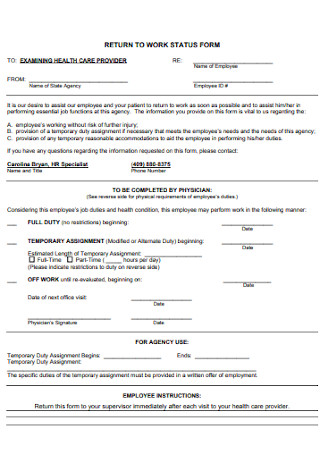
Return To Work Status Form
download now -

Return to Work Policy Template
download now -
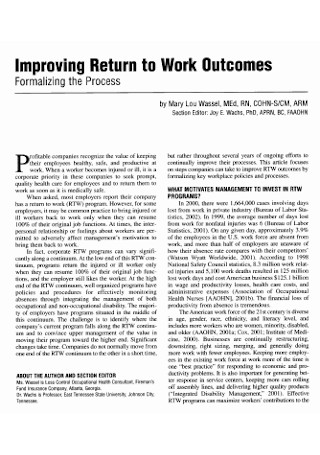
Improving Return to Work Outcomes
download now -
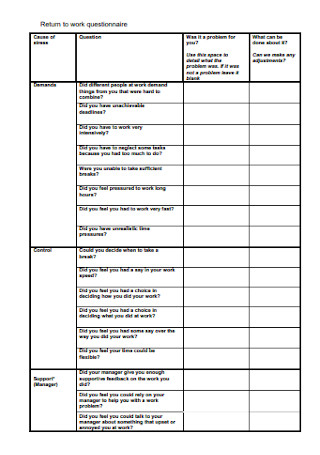
Return to Work Questionnaire
download now -
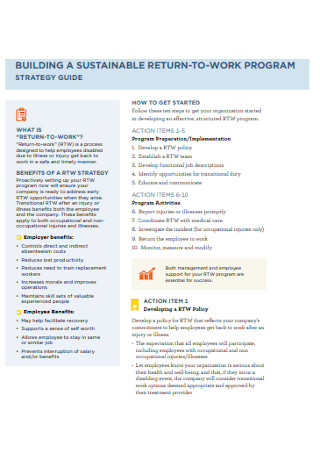
Return to Building Work
download now -

Return to Work Programs Example
download now -
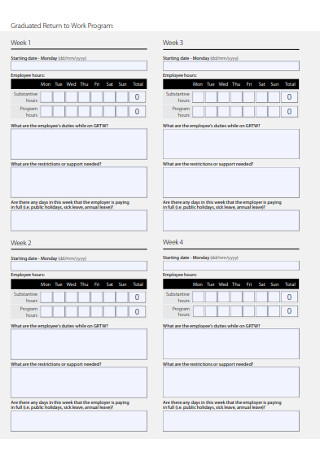
Graduated Return to Work
download now -
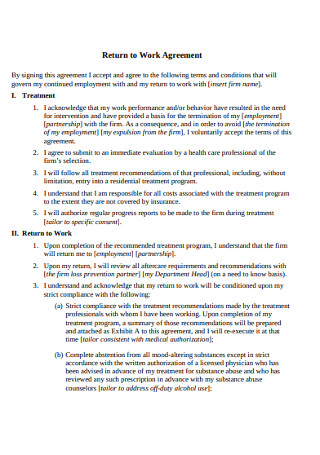
Return to Work Agreement Template
download now -
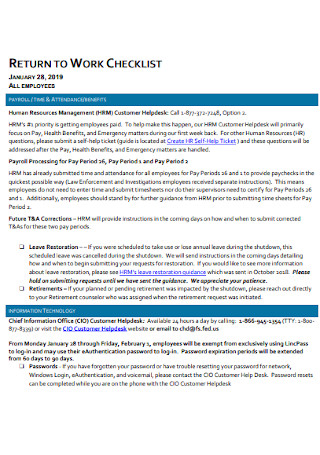
Return to Work Checklist
download now -
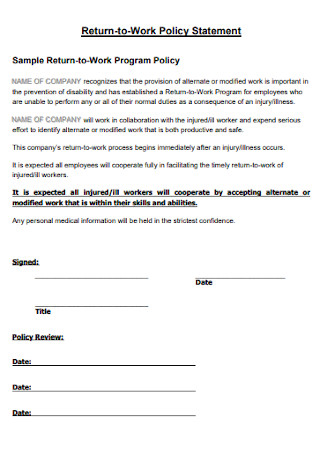
Return to Work Policy Statement
download now -
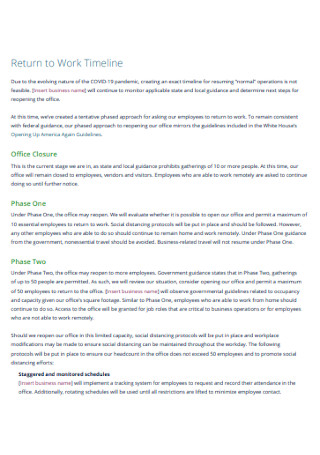
Return to Work Action Plan
download now -

Early Return-to-Work
download now -
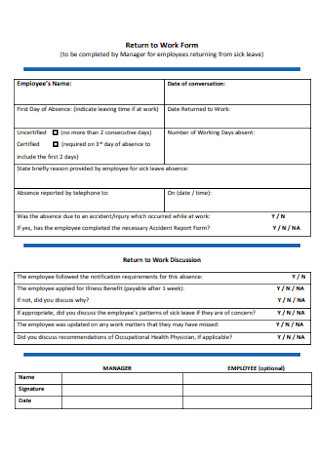
Return to Work Form
download now -
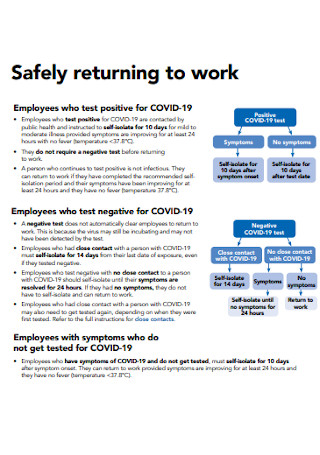
Safety Return to Work
download now -
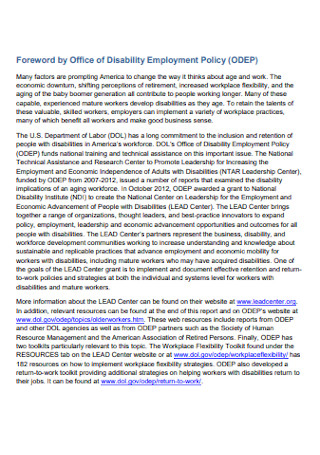
Employee Retention Return-to-Work
download now -

Physician Return to Work Form
download now -
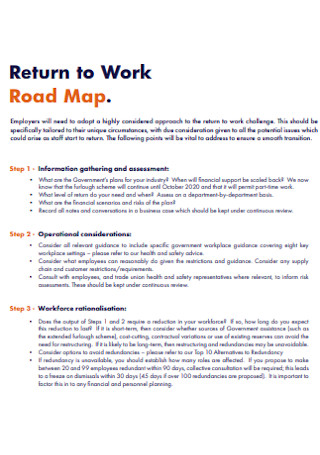
Return to Work Road Map
download now -
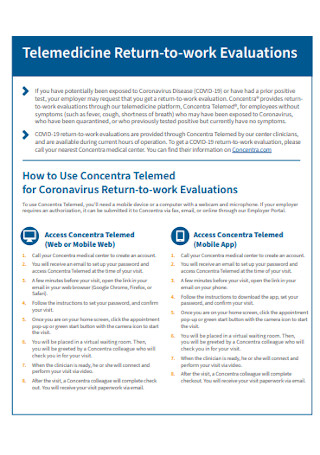
Telemedicine Return-to-work
download now -

Return to Work Plans
download now -
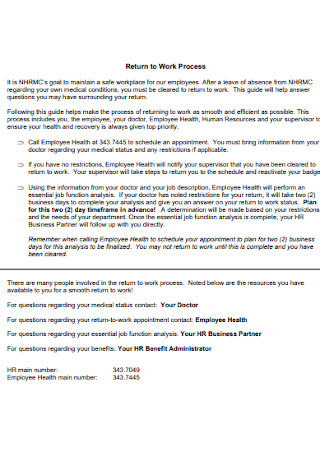
Return to Work Process
download now -
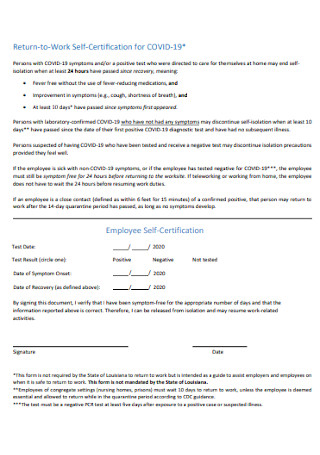
Return-to-Work Self Certification
download now -
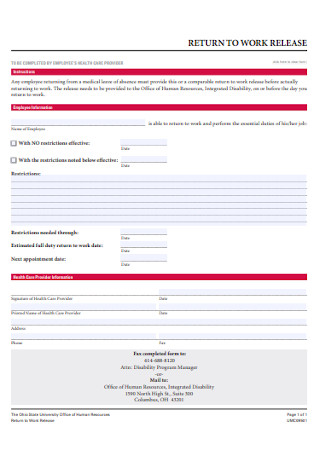
Return to Work Release Template
download now -
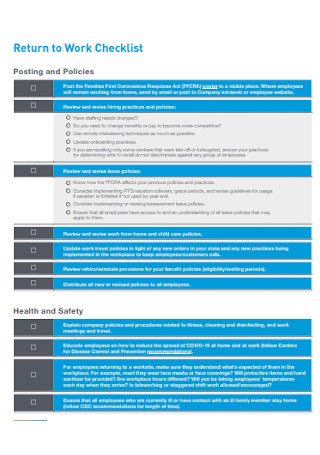
Simple Return to Work Checklist
download now -
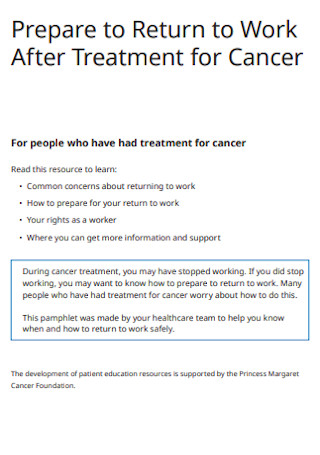
Return to Work After Treatment for Cancer
download now -
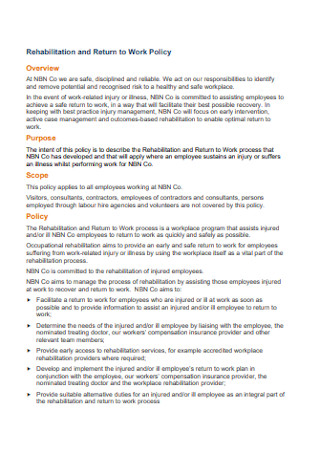
Rehabilitation and Return to Work Policy
download now -
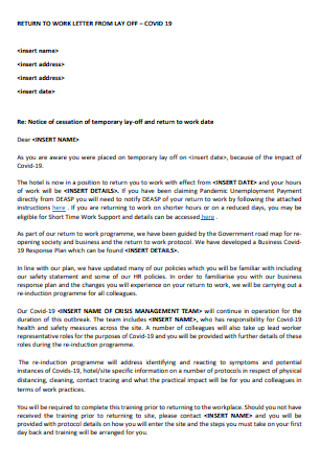
Return to Work Letter
download now -

Return to Work Campus Checklist
download now -
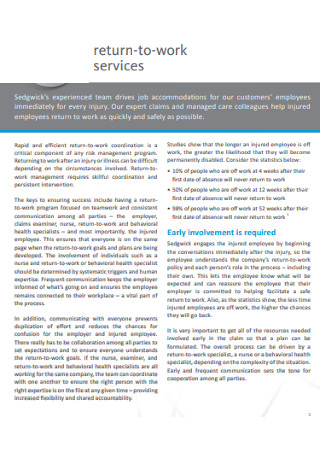
Return to Work Service Template
download now -
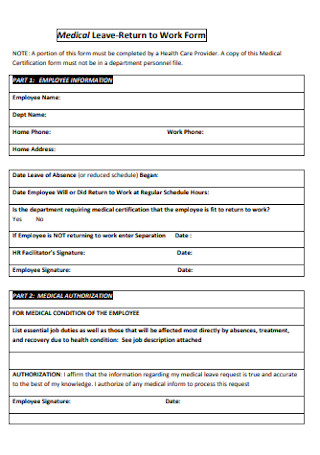
Medical Leave-Return to Work Form
download now -

Employee Return to Work
download now -

Return to Work Planning Template
download now -
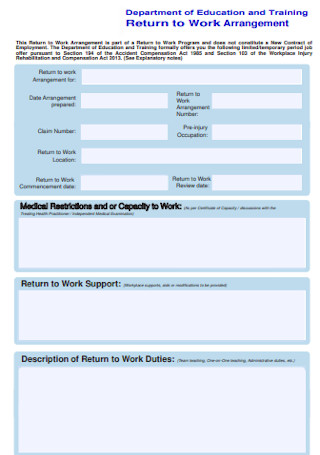
Return to Work Arrangement Example
download now
FREE Return To Work s to Download
Return To Work Form Format
Return To Work Samples
What is a Return to Work Letter?
Elements of a Return to Work Form
How to Write a Return to Work Form
FAQs
Why is it essential to provide your employer a return to work note after taking a leave of absence?
What are some tips in writing a good return to work letter?
What are the advantages of using a return-to-work template?
What is a return to work program?
What is the benefit of securing a return to work note in the corporate setting?
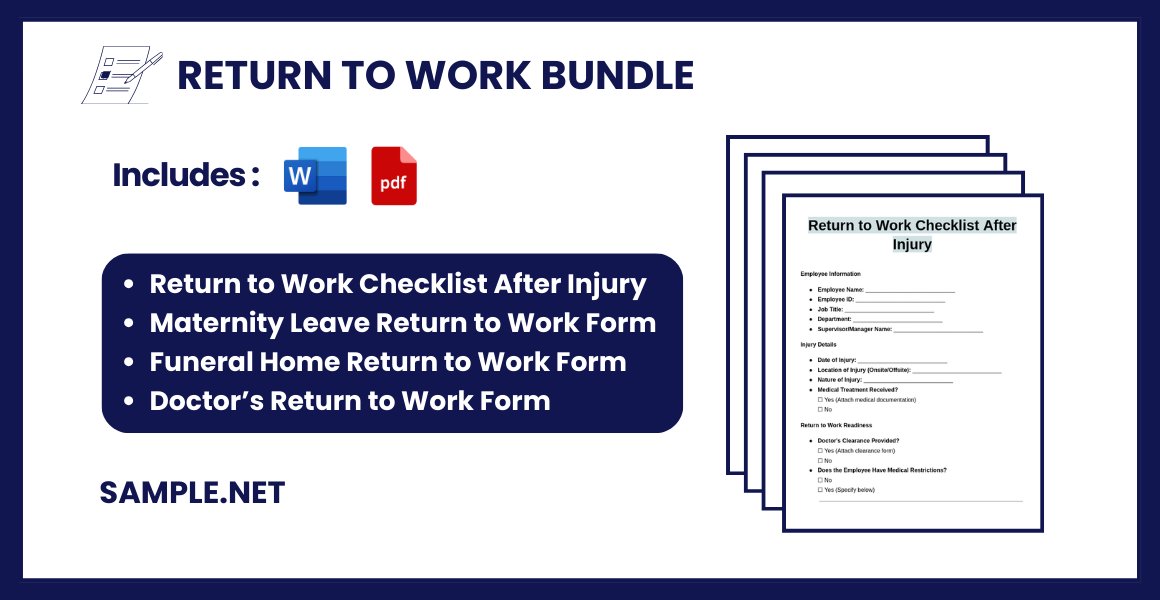
Download Return to Work Bundle
Return To Work Form Format
Employee Information
- Full Name: _______________________________
- Job Title: _______________________________
- Employee ID: _______________________________
- Department: _______________________________
- Supervisor/Manager: _______________________________
Absence Information
- Reason for Absence:
☐ Illness/Injury
☐ Personal Leave
☐ Family Emergency
☐ Bereavement Leave
☐ Other (Please specify): _______________________________ - Date of Absence Start: _______________________________
- Date of Absence End: _______________________________
- Total Days Absent: _______________________________
Medical Information (If applicable)
- Was a Medical Certificate Provided?
☐ Yes (Attach a copy)
☐ No - Was the Absence Work-Related?
☐ Yes
☐ No - Medical Restrictions/Limitations:
☐ None
☐ Yes (If yes, please provide details below)
- Is a Follow-up Appointment Required?
☐ Yes (Date of next appointment: ________________________)
☐ No
Work Status
- Date of Return to Work: _______________________________
- Is a Gradual Return to Work Required?
☐ Yes (If yes, please provide details below)
☐ No
- Does the Employee Require Modified Duties?
☐ Yes (If yes, please specify): _______________________________
☐ No - Work Hours:
☐ Full-Time
☐ Part-Time (Specify schedule: __________________________)
Employee Acknowledgment I certify that the information provided on this form is true and accurate to the best of my knowledge. I agree to comply with any restrictions or accommodations required to facilitate my return to work.
Employee Signature: ____________________________
Date: _______________________________
Supervisor/Manager Review
- Reviewed by: _______________________________
- Title: _______________________________
- Date: _______________________________
- Comments/Notes:
HR Department Use Only
- Received by (HR Representative): _______________________________
- Date Received: _______________________________
- Additional Notes:
What is a Return to Work Letter?
A return to work letter is recommended for documenting information about employees committing a prolonged period of absence from work due to illnesses and accidents, and their ability to come back to work and perform their responsibilities. A return to work form is used during return to work interviews. It is also utilized for self-certification. Workers accomplish their form with their managers during the return to work interview, and they give a rough idea of how the employee can return to the workplace as smoothly as possible.
Many employees usually take a leave of absence because they get sick. This is a common reason why a worker opts to take leaves; however, getting injured is also one of the most common reasons why an employee missed working days. You can also see more on Return to Work After Leave.
Elements of a Return to Work Form
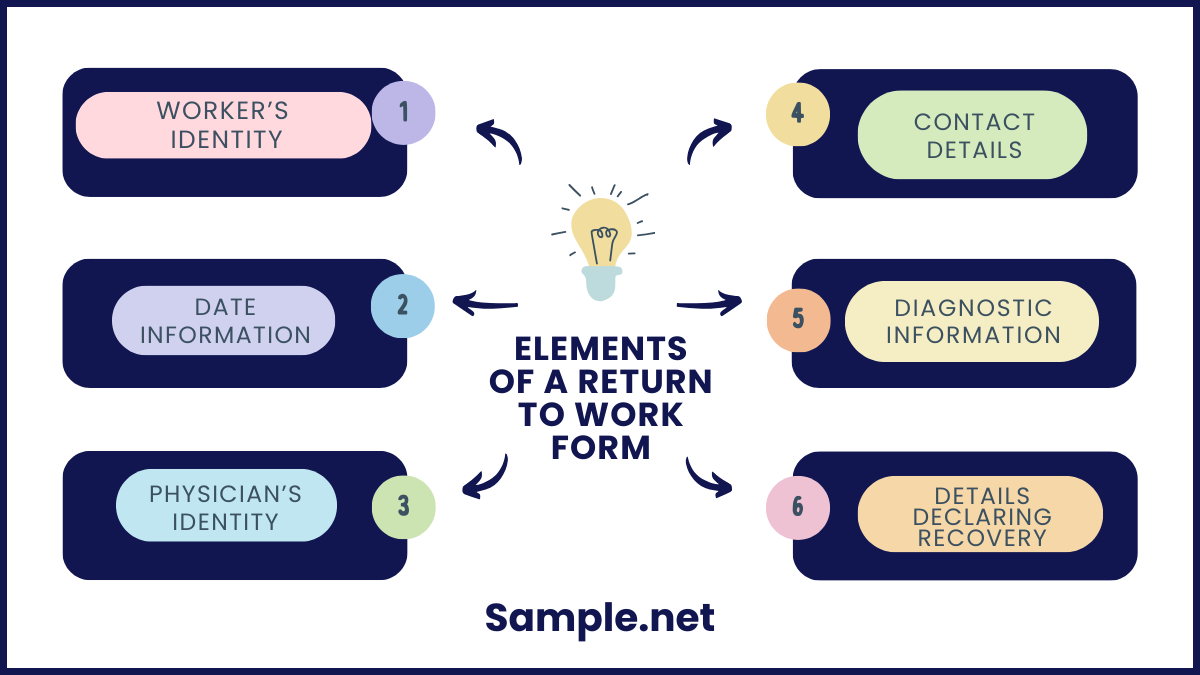
Basically, a return to work note should mention why a worker was able to miss work. It should state that they are now in a better condition if they were previously sick, and an employee returning to work is now ready to sample resume working. Should the employee need any kind of support while transitioning to work, that piece of information should be stated there, also. There are companies that have stringent policies when it comes to the return to work program. You cannot go back to work unless you accomplish a return to work note. To help you ease the process of creating one, here are the essential elements of a return to work note: A back-to-work template is a useful tool to easily create a return-to-work form for unwell or injured employees returning to work. Any well-crafted return to work form template follows these basic steps:
Step 1: Address the Letter to the Right Person.
Address the return to work letter to the right people—to a human resources representative or to an immediate supervisor. It depends on the agency’s structuring and policies, also. These people are the ones who will take care of your leave of absence or anything that has something to do with your attendance and non-attendance. You can also see more on Work Checklists.
Step 2: Express Gratitude to Them for Approving Your Work Leave.
When you create a letter to return to work, the proper way is to open with a thank you for authorizing or approving your leave. State how your work leave lets you recover from an illness, care for a family member or relative, or cater to any changes at home.
Step 3: Affix Important and Proper Documentation.
The necessary proper documentation attached to your letter depends on the reasons behind your absence and the return to work policy by your company. The documentation can either be a letter of intent to return to work or a form you were required to fill out by your company before you took your leave of absence. Furthermore, if you came back after being ill or had surgery, your company will be asking you to present a return-to-work doctor’s note confirming you are already fit to resume your office duties. If you decide to include a medical return-to-work form, be sure to state the reason behind your absence and your physical limitations once you resume working. You can also see more on Forced and Mandatory Leave. Step 4: State How You Plan a Smooth Transition.
Any employee return to work letter sample lays out specific details on how an employee plans to get reacclimated. This is important to ensure you can have a seamless transition back to work, and get back to your performance level prior to your leave of absence. A smooth transition is also vital for you to get accustomed to new working conditions since you had been away. For instance, you have been sent the minutes of a meeting or any internal corporate communication documents to help you be in the loop.
Step 5: End the Letter With a Thank You Note.
End the return to work letter with gratitude. Thank your employer, managers, immediate supervisors, or even the HR representative for their consideration, flexibility, patience, and support during your absence to show your appreciation, gratitude, and professionalism. You can also see more on Employee Work Report.
More often than not, companies require a return to work note after an employee’s leave of absence over a long period of time. The purpose of this is to jog your immediate supervisor’s memory about the reason why you missed work, to look into your capacity to start afresh fulfilling your professional duties and responsibilities, and to establish details on the date you planned to come back to work. When you want to resume work after an extended leave of absence, you can make use of a well-written return to work note to put into writing the essential details your employer needs to be aware of so they can delegate the tasks within the organization, and maintain the expected workflow. With the use of a letter, you can communicate any alterations or updates that took place during your non-attendance, and indicate if you need any kind of support upon your return.
When crafting the letter, use professional language. Never use informal language, and avoid using jargon that the employer isn’t accustomed to; moreover, keep from using abbreviations because they can be a source of confusion. Incorporate a letterhead, also. The most important part is to proofread the letter to make sure it is error-free. The spelling and grammar must be on point. You can also see more on Employee Work Plan.
A return to work letter template can be utilized by any employee who has an extended leave of absence (due to illness or injury from accidents) to mention his or her days of non-attendance and the reasons behind them. The return to work form templates are not only of great help during sickness and injuries, but they are most useful these days amidst the coronavirus pandemic. It can be utilized to help in assessing how the workers can safely return to the office since some companies shifted to work-from-home arrangements last year. Yet, some companies now opted to return to the office setup despite the ongoing pandemic. A template lets you customize your letter or form according to your preferences. It saves you the effort and time you spend on researching the necessary details for the letter. A template almost has everything already which you can tweak depending on your needs.
A return to work program thrives on the basis of a medical certificate giving a rough idea of the employee’s capabilities and limitations upon returning from a lengthy leave of absence due to sickness or accidents. The company or employer crafts a return to work plan laying out responsibilities of a returning worker to carry out until they are fully well. The return to work plan also provides emphasis on the support to be given to the returning worker.
Once you provide your employer with one, you can be certain that your non-attendance and leaves are duly documented. There are also instances that an employee’s reason for missing work due to sickness or injury can be considered as a paid leave. You can also see more on Work Agreements.
How to Write a Return to Work Form
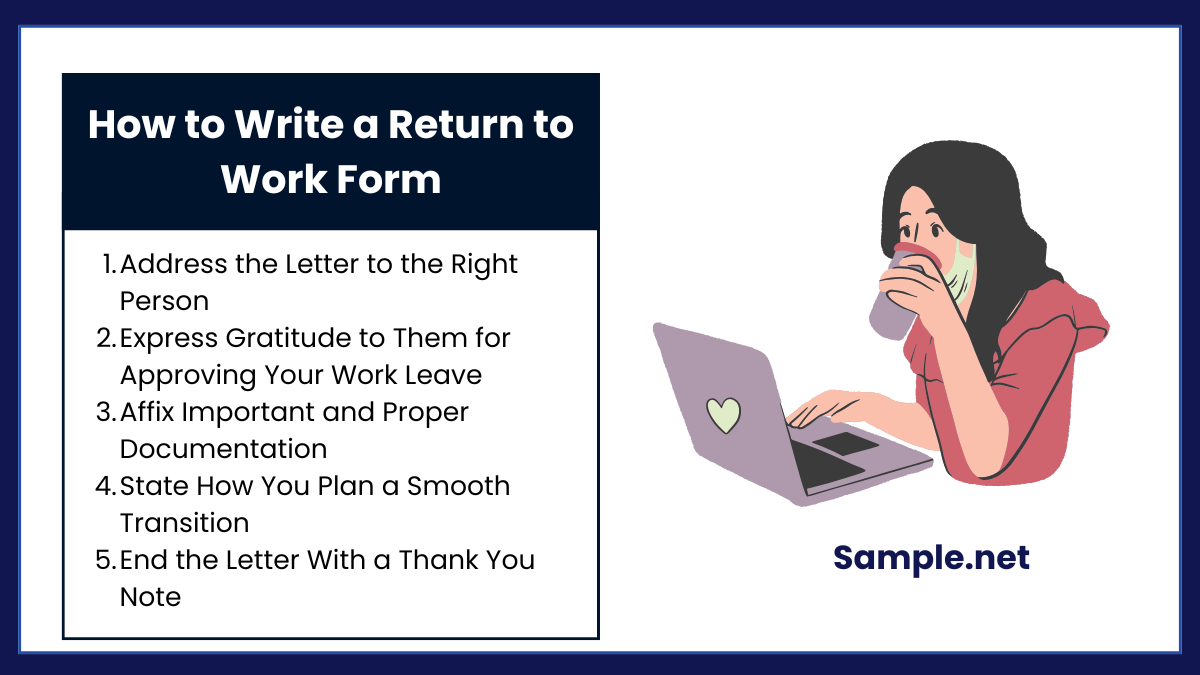
FAQs
Why is it essential to provide your employer a return to work note after taking a leave of absence?
What are some tips in writing a good return to work letter?
What are the advantages of using a return-to-work template?
What is a return to work program?
What is the benefit of securing a return to work note in the corporate setting?
